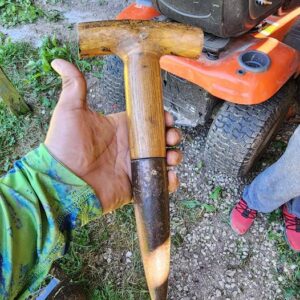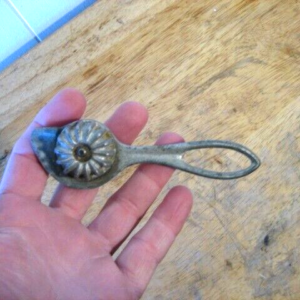History of the Vintage Apple Peeler Corer Slicer
The apple peeler corer slicer has a rich history dating back to the 19th century. Inventors designed these ingenious devices to streamline the labor-intensive process of peeling, coring, and slicing apples. The first patent for an apple peeler was issued in the early 1800s, with subsequent innovations improving efficiency and usability. By the mid-1800s, these devices became household staples, particularly in America and Europe, where apple cultivation was widespread.
Craftsmen of the era constructed apple peelers from cast iron, brass, and steel, often incorporating intricate designs and sturdy mechanisms. These early models operated manually, using hand-cranked mechanisms that rotated the apple against a blade. The innovation was not only in the peeling but also in the simultaneous coring and slicing, which saved significant time and effort.
Usage of the Apple Peeler Corer Slicer
The primary function of the apple peeler corer slicer is to prepare apples quickly and efficiently. Here’s how it works:
- Mounting the Device: The device typically attaches to a countertop or table using a clamp to ensure stability during operation.
- Securing the Apple: The apple is then secured onto the device’s prongs or skewers, ready for processing.
- Peeling, Coring, and Slicing: By turning the hand crank, the apple rotates against a sharp blade that peels the skin. Simultaneously, a coring blade removes the core, and an adjustable slicing blade cuts the apple into uniform rings.
This device is particularly useful for making apple pies, sauces, and other apple-based recipes. It reduces preparation time significantly, making it a favorite tool among home cooks and professional bakers.
Legacy of the Vintage Apple Peeler Corer Slicer
The vintage apple peeler corer slicer holds a special place in both culinary history and kitchen collectibles. Its legacy is marked by several key aspects:
- Historical Significance: These devices reflect the ingenuity and practical problem-solving of 19th-century inventors. They represent a time when kitchen gadgets began to evolve, making domestic tasks easier and more efficient.
- Craftsmanship: Vintage models are admired for their craftsmanship. Made from durable materials like cast iron and brass, they often feature intricate designs and robust mechanisms that have stood the test of time. Many antique apple peelers are still functional and are sought after by collectors.
- Culinary Impact: The apple peeler corer slicer revolutionized apple preparation, especially in regions with abundant apple harvests. It allowed for quicker processing of large quantities of apples, making it easier to preserve the fruit and incorporate it into various dishes.
- Modern Influence: The basic design and functionality of the vintage apple peeler corer slicer continue to inspire contemporary kitchen tools. Modern versions often use similar principles but incorporate materials like stainless steel and plastic to enhance durability and ease of use.
Collectibility and Nostalgia
Vintage apple peeler corer slicers are cherished by collectors and antique enthusiasts. They evoke a sense of nostalgia and offer a tangible connection to the past. Collectors often seek out these items at antique shops, flea markets, and online auctions, valuing their historical significance and functional beauty.
Conclusion
The vintage apple peeler corer slicer is more than just a kitchen tool; it is a symbol of culinary heritage. Its history, usage, and legacy highlight the evolution of domestic gadgets and their impact on everyday life. As both a practical device and a collectible item, the apple peeler corer slicer continues to hold a special place in kitchens and hearts around the world.



